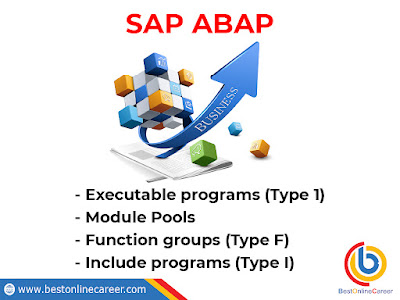ABOUT SAP ABAP:
ABAP was started by SAP during the 1980s. During the years, a few upgrades to the language further developed how software engineers could manage it. For instance, through April 2000 projects must be made procedurally, which means a program needed to follow a bunch of pre-characterized "techniques" to play out a specific errand effectively.
In May 2000, SAP reversed ABAP with announcement 4.6C, allowing for object-oriented programming (OOP). This programming approach comprises various individual “objects” communicating with one another, allowing programs to develop more complex with the use of ABAP designs Patterns and other OOP practices.
WHAT IS SAP ABAP?
ABAP (Advanced Business Application Programming) is the name of SAP’s proprietary, fourth-generation programming language. It was specifically developed to enable the mass processing of data in SAP business applications.
ABAP innovation is the solid long-term establishment for SAP's answer portfolio. Its demonstrated power, adaptability, and extensibility make it the foundation of option for overseeing strategic business measures.
ABAP is a high-level programming language designed by SAP that supports large organizations to customize the SAP ERP. ABAP can help customize workflows for commercial accounting, materials administration, asset administration, and all other modules of SAP.
ABAP is a multi-paradigm programming language, meaning programmers can employ procedural, object-oriented, and other programming policies
ABAP is a programming language utilized for generating applications for the SAP R/3 system. SAP will operate applications written using ABAP /4.
Types of ABAP Programs
Each ABAP program has a type, which is defined in the program attributes. What is the goal of all the different program types? The program type commands which processing blocks a program can accommodate, how the program is managed and performed by the runtime environment, and whether it can work with its screens. The following ABAP program types are available
Let us first see the program types approved by the ABAP workbench.
- Executable programs (Type 1)
Executable programs are introduced with the REPORT announcement. They can hold their screens and are executed via the SUBMIT statement or transaction codes. Executable programs can contain all the various processing blocks in ABAP, except for function modules, and any number of local classes. They can be created directly with the ABAP Editor tool. While they are working, all the runtime environment events can occur.
- Module Pools:
These are type M projects portrayed with the watchword PROGRAM. For the execution of these projects, something like one exchange code is required where the first screen is indicated. The default screen number is 1000.
Below are the four elements of a Module pool program.
· Screens.
· Transaction Codes.
· GUI Status.
· ABAP Program.
- Function groups (Type F)
Function groups or pools are presented with the FUNCTION – POOL statement. They can hold their screens. Normally, function groups are not executed directly. They are loaded by calling their function modules. They can contain all the multiple processing blocks in ABAP, except for reporting event blocks, and any number of local classes. They are the only programs that can contain function modules and are created with the Function Builder tool.
- INTERFACE-POOL
Like class pool programs they additionally can't contain there just handling squares and screens. They contain a solitary meaning of a worldwide interface, which can be executed in any worldwide or neighborhood class. They are made with the Class Builder apparatus
- Include programs (Type I)
These are type I programs addressed with the Keyword INCLUDE. Assuming similar successions of steps are utilized in the program, they can be put in a comprehensive program so the number lines of code can be decreased (e.g.: Lengthy information affirmations). They can't be executed freely. They should be called from an executable program or another included program. The code composed as a feature of the included program is settled before age. After age, the projects contain the source code of all the incorporate projects. The assertion INCLUDE [PROGRAMNAME] is utilized to incorporate an incorporate program as a feature of a program.
Who Could Benefit from SAP ABAP?
- IT Professionals.
- SAP ABAP on HANA consultants.
- All SAP Experts.
- Stakeholder.
- SAP functional consultants.
- Business Professionals.
- SAP end users.
- Experienced employees in programing background.
About Us:
Best Online Career Organization brings to you its knowledge and expertise of over 18+ years in online training and SAP consultancy. Our area of expertise, alongside beginners to professional SAP consultants, is overpowering in contrast to armature institutions. We have always focused on new versions / upcoming versions with process counseling and adjusting business procedures to SAP.

